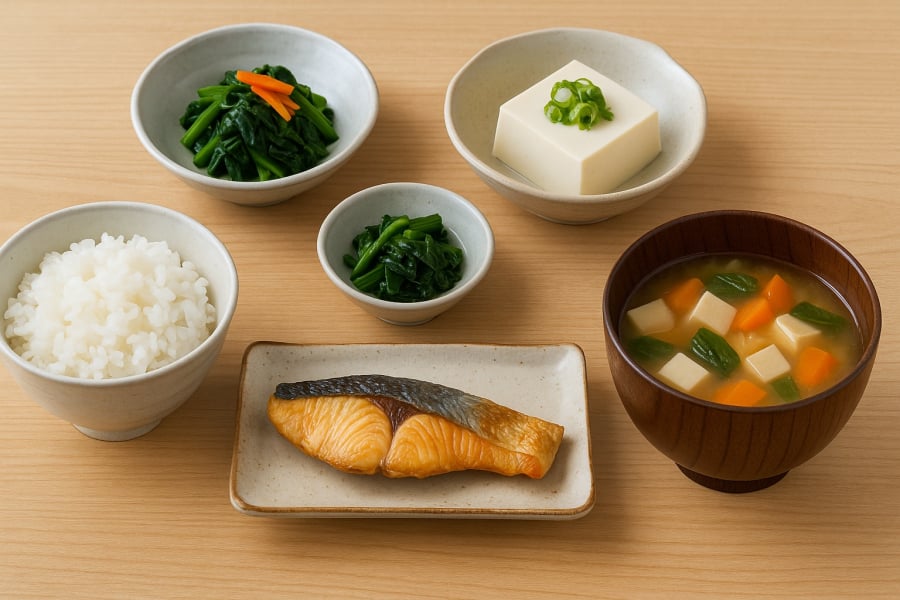Living Longer Without Intense Exercise
Data from Japan’s Ministry of Health, Labour, and Welfare reveals that the country consistently leads the world in life expectancy. Paradoxically, international studies show Japan ranks among nations with the lowest physical activity levels. Over 60% of adults admit to lacking a regular exercise routine, largely due to demanding work schedules and fast-paced lifestyles.
Yet, amidst modern pressures, the Japanese maintain robust health, balanced physiques, and sharp minds—not through grueling workouts or strict regimens, but by seamlessly integrating healthy principles into daily life, gently and consistently.
Mindful Eating: Avoiding Overeating
One of the most nuanced aspects of Japanese dining culture is their attentiveness to bodily cues. The Japanese stop eating at around 70% fullness, avoiding the discomfort of overeating. This moderation prevents digestive strain and reduces the risk of excess fat accumulation or metabolic disorders.
Their daily meals aren’t elaborate or expensive but rather a balanced blend of food groups. Seasonal vegetables, beans, seaweed, fresh seafood, and more are prepared simply, preserving natural flavors and digestibility. Each meal is a harmonious composition—visually appealing and nutritionally complete.

Minimal Processing, Maximum Freshness
A traditional Japanese meal rarely features deep-fried or heavily seasoned dishes. Instead, they favor quick, minimally invasive cooking methods like steaming, light grilling, or boiling. This approach retains nutrients and natural flavors, ensuring meals are both nourishing and light.
This philosophy promotes post-meal comfort and efficient bodily function, explaining why many elderly Japanese remain active and free from digestive or metabolic issues.
Fish as the Main Protein, Meat as an Accent
Surrounded by the ocean, the Japanese naturally incorporate seafood into their diet. Fish like mackerel and salmon, along with shellfish, provide lean protein with fewer saturated fats than red meat. Unlike many Western diets heavy in beef or pork, the Japanese consume fish almost daily, reducing cardiovascular risks and supporting brain health and weight management.
Walking as a Lifestyle, Not a Chore
Despite skipping gyms or yoga studios, the Japanese stay active through everyday habits. Walking to train stations, cycling to shops, and opting for stairs over escalators are ingrained in their culture, not viewed as exercise. Children walk to school independently, and adults prioritize movement over convenience, ensuring consistent daily activity without formal workouts.
Regular Health Check-Ups as a Norm
Preventive care is a cornerstone of Japanese health. Annual check-ups, organized by schools or employers, are standard for all ages. This proactive approach enables early disease detection, reducing complications and easing the burden on healthcare systems—a key factor in their longevity.
Longevity Through Intentional Choices
Japanese longevity isn’t genetic or mystical; it’s the result of daily, sustainable habits. Eating moderately, sleeping well, moving naturally, and listening to one’s body form the foundation of their health. These small, consistent practices yield significant long-term benefits.
You don’t need to be Japanese to adopt their approach. Start today—one step at a time—to live healthier, slower, and more fully.
‘Affordable Superfoods to Fight Inflammation’: 3 Food Groups to Consume More to Reduce Body Inflammation
“The notion that consuming certain foods will automatically eradicate inflammatory responses in the body is a common misconception. However, experts emphasize that anti-inflammatory practices are not just about ‘eating the right things’, but more importantly, understanding how the body reacts and responding with appropriate dietary choices.”
5 Golden Rules for Moms to Create a Fun and Nutritious Menu for Toddlers Aged 1-3
“Parents play a pivotal role in their children’s development, and this includes paying close attention to their nutrition and encouraging exploration and play. Nurturing a child’s natural curiosity and providing them with opportunities to engage in playful learning experiences are essential for their overall growth and well-being.”






































